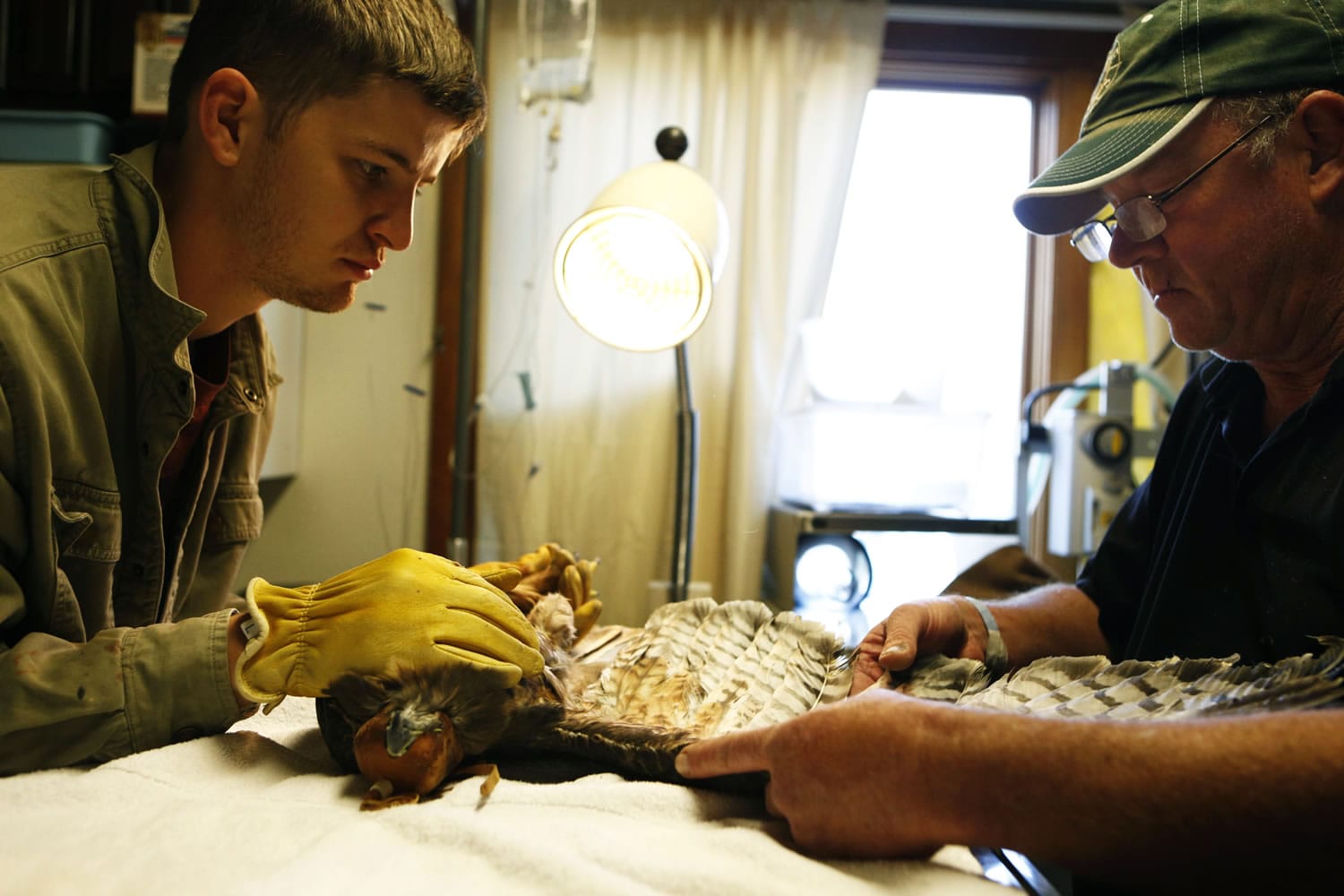BEND, Ore. — A couple hundred animals are tucked into and around a modest house just east of Bend.
They include a flying squirrel whose feet were burned off by a wildfire, a porcupine with nerve damage after it was hit by a car, and a bald eagle found near Wickiup Reservoir with a wing wounded by an electric shock. Volunteers at High Desert Wildlife Rescue and Rehabilitation tend to the animals, small and big, with hopes of eventually releasing them. About 50 percent of the animals cared for there recover and return to the wild.
The fledgling nonprofit has quickly increased the number of animals it cares for each year, and its founders have hopes for expansion. Jeff Cooney, 59, president and resident veterinarian, said he’d like to have an animal hospital and education center by the small house someday.
“My goal has always been since vet school to come to Central Oregon and build a very nice center,” he said last week.



